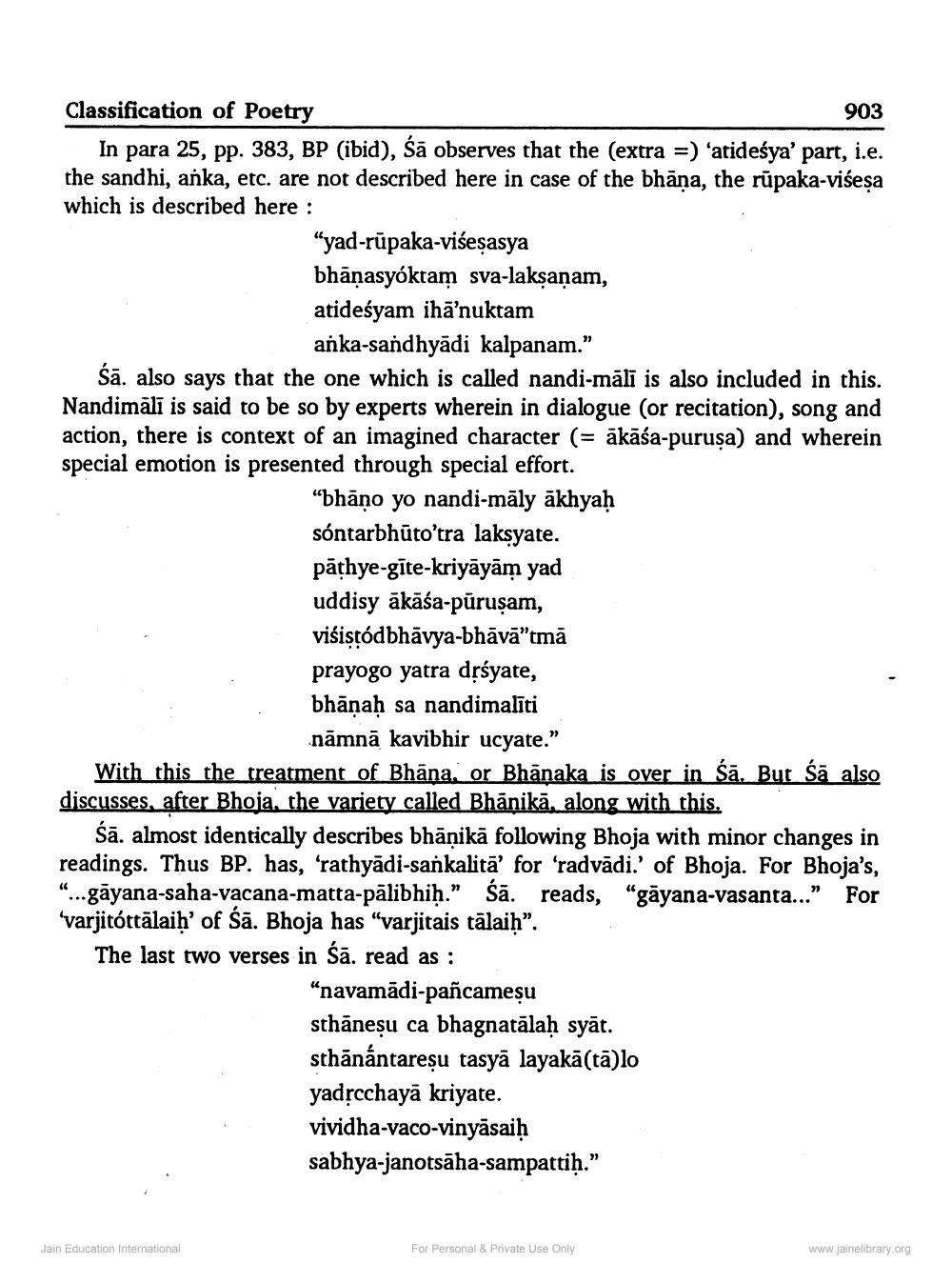________________
Classification of Poetry
903 In para 25, pp. 383, BP (ibid), Śā observes that the (extra =) atideśya' part, i.e. the sandhi, anka, etc. are not described here in case of the bhāna, the rūpaka-visesa which is described here :
"yad-rūpaka-višeşasya bhāṇasyoktam sva-lakṣaṇam, atideśyam ihā’nuktam
anka-sandhyādi kalpanam.” śā. also says that the one which is called nandi-māli is also included in this. Nandimāli is said to be so by experts wherein in dialogue (or recitation), song and action, there is context of an imagined character (= ākāśa-purusa) and wherein special emotion is presented through special effort.
“bhāņo yo nandi-māly ākhyaḥ sóntarbhūto’tra laksyate. pāthye-gīte-kriyāyām yad uddisy ākāśa-püruşam, visiştódbhāvya-bhāvā”tmā prayogo yatra drśyate, bhāṇaḥ sa nandimalīti
nāmnā kavibhir ucyate." With this the treatment of Bhāna, or Bhānaka is over in Śā. But śā also discusses, after Bhoja, the variety called Bhānikā, along with this.
śā. almost identically describes bhāņikā following Bhoja with minor changes in readings. Thus BP. has, frathyādi-sankalitā' for 'radvādi.' of Bhoja. For Bhoja's, "... gāyana-saha-vacana-matta-pālibhiḥ.” Śā. reads, "gāyana-vasanta..." for 'varjitóttālaih' of Sā. Bhoja has “varjitais tālaiḥ”. The last two verses in śā. read as :
“navamādi-pañcameșu sthāneșu ca bhagnatālaḥ syāt. sthānántareșu tasyā layakā(tā)lo yadrcchayā kriyate. vividha-vaco-vinyāsaiḥ sabhya-janotsāha-sampattiḥ."
Jain Education International
For Personal & Private Use Only
www.jainelibrary.org




